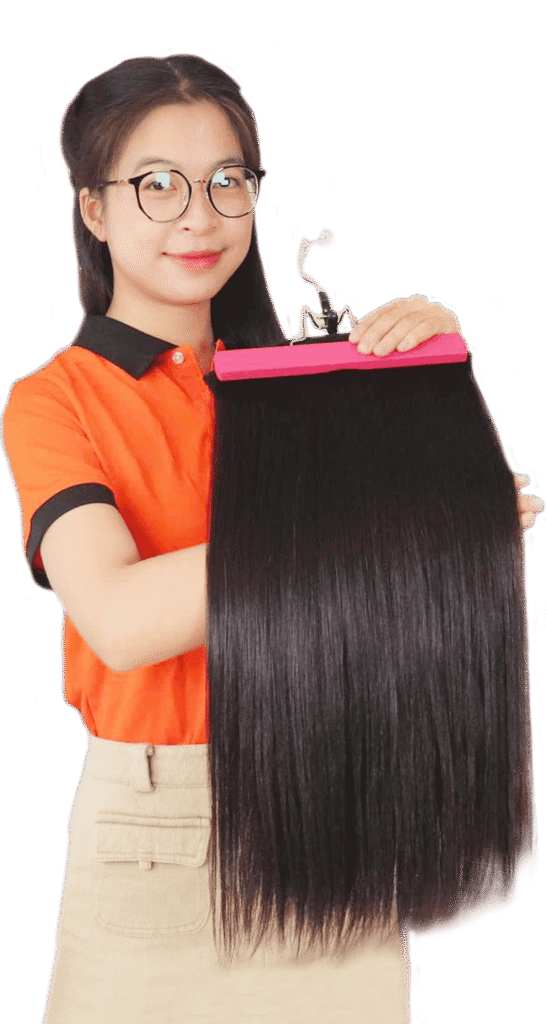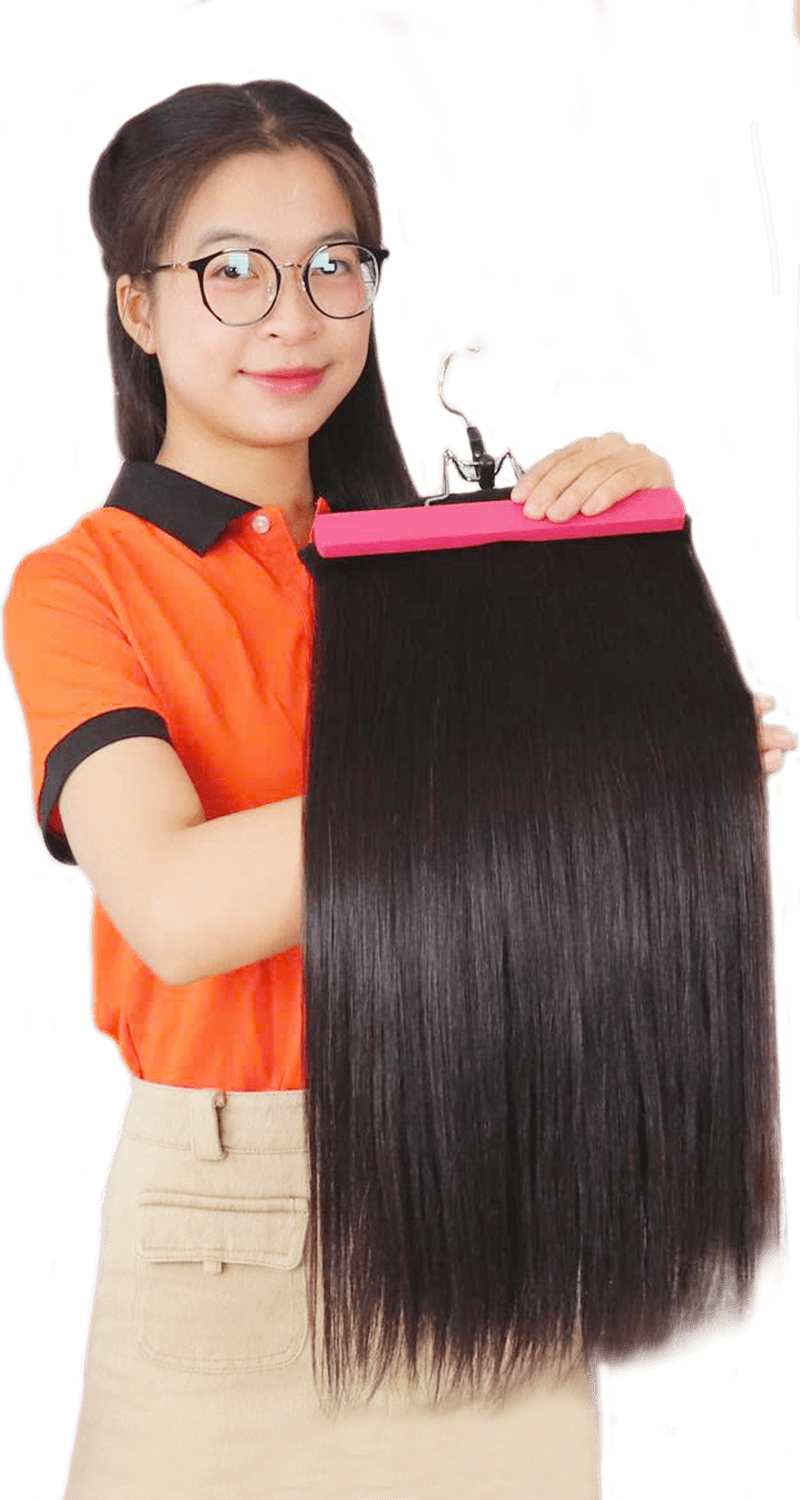Whenever we talk about brushing your hair, you probably don’t think too much about it. Although it seems stupidly easy, just need to pick up the brush, comb it through your hair, and repeat. However, if you do it wrong, you could suffer serious hair issues, from breakage to a mass of tangles. But the good news is that with the right brush and expert tips, you can keep your hair so soft, strong, and shiny. Here’s how to brush your hair the right way as well as the biggest mistakes to avoid.
I. Brushing Your Hair: What Are The Benefits?
Most of the time, we comb our hair to detangle it, but there are more benefits to combing your hair than having tangle-free hair:
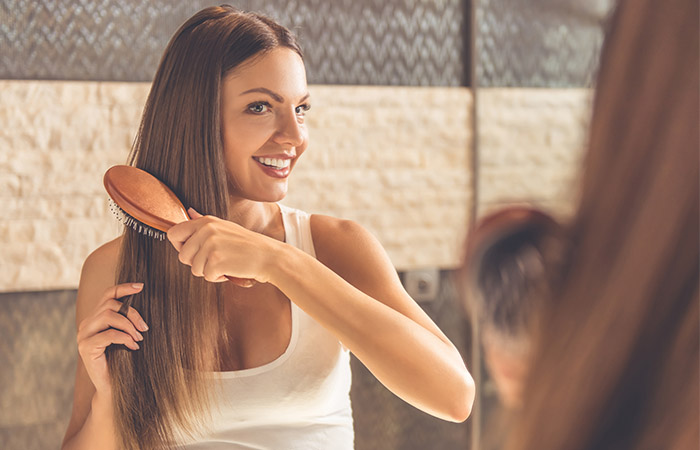
- It Keeps Your Hair Healthy And Shiny: Sebaceous glands located in your hair follicles produce natural oils that help lubricate your scalp. When you brush your hair properly, it helps distribute these natural, healthy oils, from the roots of your hair to the ends, giving them a natural shine.
- Scalp Stimulation: Brushing your hair gently is like a mini massage that stimulates your scalp, which encourages blood flow and hair growth.
- Remove Any Stray Hairs: It’s normal to shed between 50 and 100 strands of hair a day, so when you brush your hair daily, you help remove loose hair.
II. Hair Brushing Mistakes You Should Avoid
Here are some common hair-brushing mistakes you may be committing that you don’t even realize:
Hair Brushing Mistake #1: You're Using The Wrong Brush.
Brushes don’t follow the mantra of one-size-fits-all. Test a brush before you use it. It shouldn’t feel painful or rough and should complement your hair’s texture and the style you desire.
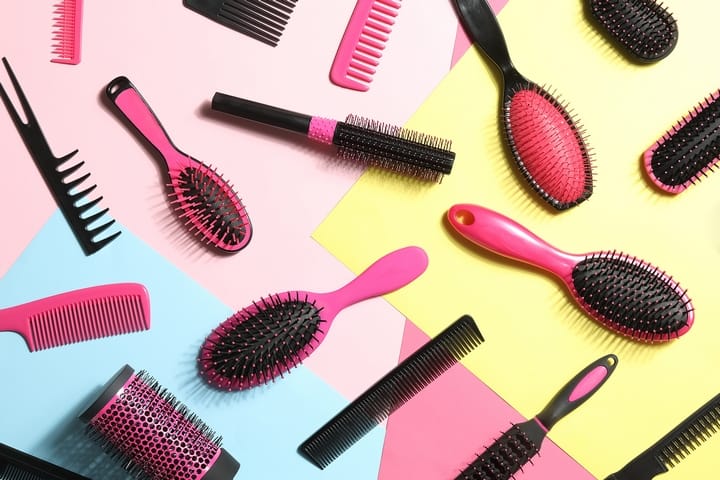
- Round and metal brushes add volume while blow drying.
- If your hair is curly or coarse, use a tough or boar bristle brush that has enough tension to pull through your hair.
- Flat ones are best for sleeker finishes. A flat, paddle-shaped brush is good if you want to put hair into a ponytail or an updo.
*Avoid brushes with balls at the end of each bristle. Your hair may wrap around the balls and get ripped out. Your best bet is to use a bristle brush or comb with staggered teeth. These tools relieve knots without tearing out your hair.*
Mistake #2: You're Not Brushing Enough or Too Much.
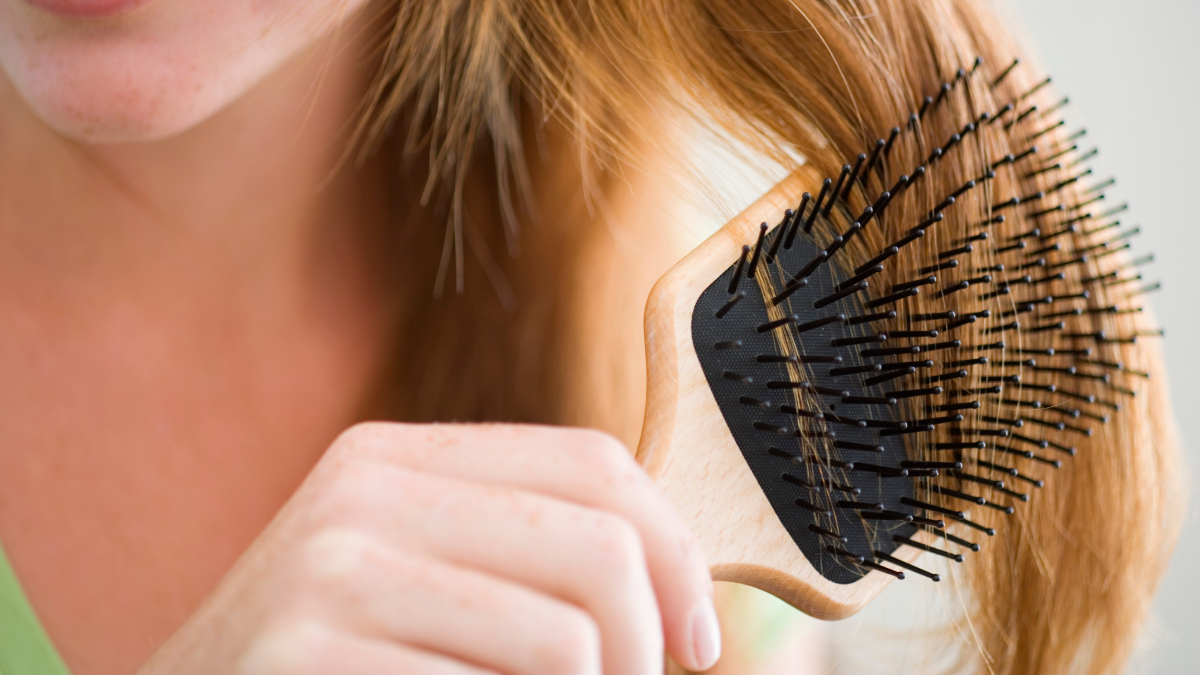
Brushing your hair gently a few times a day is good for it, especially if it’s long. It helps condition strands, distributing oils and promoting a healthy scalp. Three or four strokes are typically enough to remove any knots or fix your style. The more you brush, the more damage you’re potentially doing to your mane.
Hair Brushing Mistake #3: You're Brushing Your Hair When It's Wet.
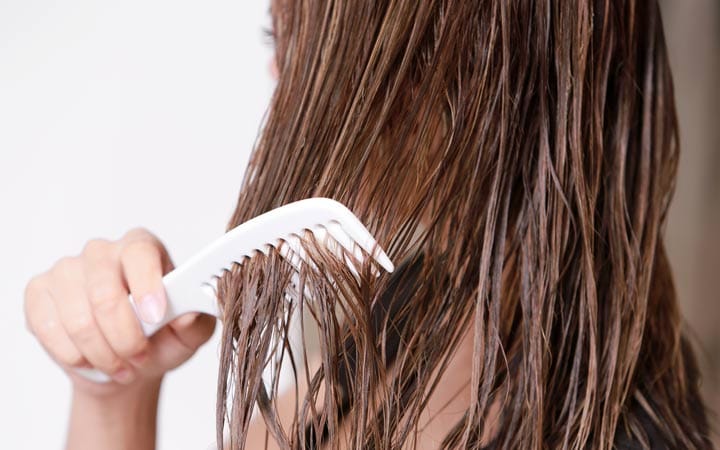
As we said, your hair is weakest, most fragile, and most vulnerable when it’s wet, meaning you need to give it some extra protection. So, before reaching for your brush, try partially rinsing out your conditioner so some remains in your damp hair when you comb it out. This helps completely detangle your hair so it’s soft and malleable.
Mistake #4: Choosing the Wrong Comb To Detangle
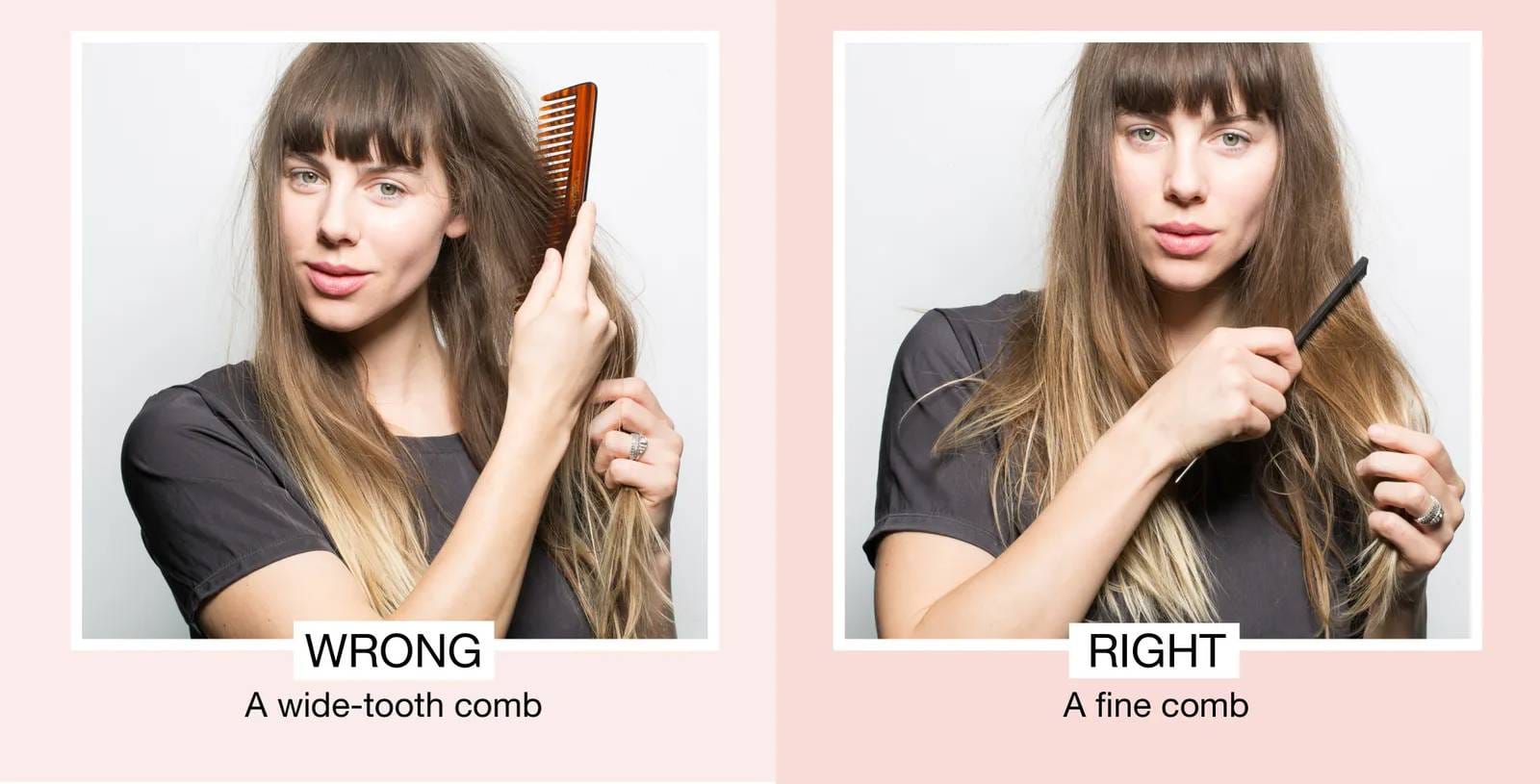
Combs were designed for one thing and one thing only: to detangle hair. But they’re not all made equal. A wide-tooth comb breaks the hair and, instead of detangling, locks in knots, leaving your hair rough and difficult to manage. A fine-tooth comb is gentler on hair, while one with boar bristles also does the trick.
Hair Brushing Mistake #5: You're Brushing It In The Wrong Direction.
Brushing the hair from top to bottom causes more knots and creates unnecessary damage and breakage. When untangling hair, start a few inches from the bottom (the ends) and work your way up (to the roots). Move closer to your scalp once you’ve taken care of all the tangles in the section you’re working with. (Don’t avoid the top of your head altogether; brushing your roots helps redistribute natural oils, conditioning the hair and keeping it healthy.)
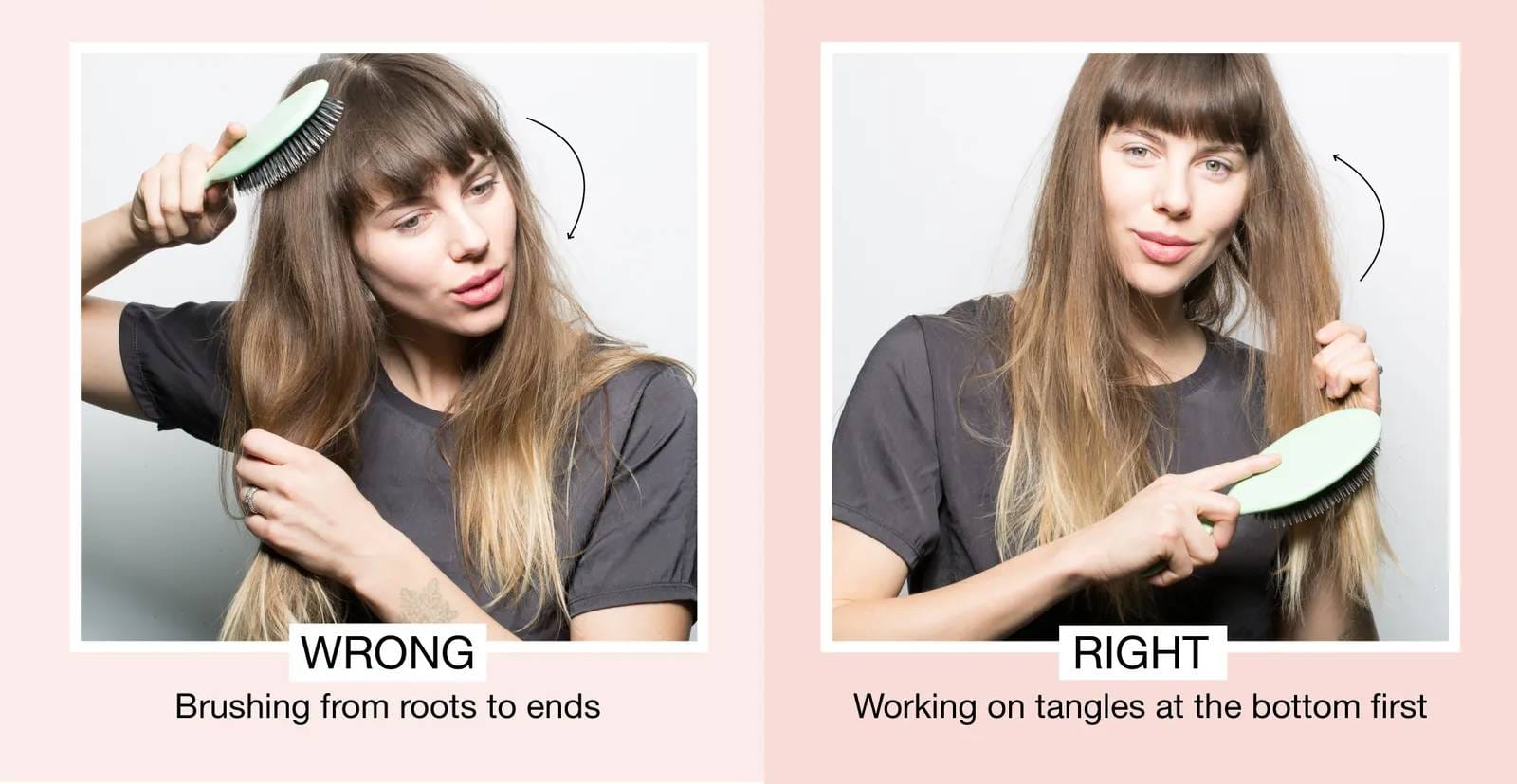
This way, you won’t pull on it, causing unnecessary stress on your mane and possible damage like breakage. If you go down the entire length of your hair in one swipe, you’re bound to snag your brush on a tangle and your hair can snap. Following this method, hair will eventually be fully detangled and you’ll be able to smoothly brush it from scalp to tip.
Mistake #6: You're Brushing Through Dry Curls.

If you’re curly-haired, avoid brushing through dry curls. Opt for combs instead of brushes. Brushing curls can aggravate the hair cuticle and even break off the curls. Instead, use a wide-tooth comb to detangle strands when they’re wet.
Read Now: How To Care For Curly Hair Extensions?
III. How Often Should You Brush Your Hair?
If your hair routine involves 100 brush strokes a day, you might want to rethink your strategy. According to the American Academy of Dermatology, hair doesn’t need 100 brush strokes a day. In fact, researchers found that brushing more is associated with more hair loss. We recommend brushing twice a day, once in the morning and once at night. This is a healthy way to distribute your scalp’s natural oils through your hair — but only if you do it gently.
IV. How To Brush Your Hair In The Right Way?
1. Brushing Wet Hair
When it comes to combing wet hair, the type of brush you use and your technique are critical to maintaining the health of your hair. When your hair is wet, it is extremely fragile, so use extreme caution when combing it.

Wet hair is combed with a wide-toothed comb or a wet hair brush. A wet hair brush is an excellent hair care tool because it can be used on both dry and wet hair. And these brushes do an excellent job of combing through all types of hair without pulling, tearing, or breaking it.
Wet Hair Combing Steps:
- Step #1: Begin by combing or brushing the very ends of your hair.
- Step #2: Gently comb downward to remove any tangles. Do not comb your hair too tightly.
- Step #3: Brush with a small brush if possible. Feel free to loosen any knots with your fingers.
- Step #4: If your hair is particularly tangled or knotted, start by smoothing out your strands with a hair remover or leave-in conditioner.
- Step #5: After you’ve removed the tangles from your hair’s ends, move up a few inches and begin combing down to work out the tangles.
- Step #6: Repeat until you reach your scalp and your hair is completely tangle-free.
2. Brushing Dry Hair
Dry hair is prone to becoming tangled and unkempt, resulting in knots and breakage. You can comb your hair in sections to avoid causing damage to it. However, do not begin at the roots of your hair. This is due to the fact that brushing your hair from top to bottom will inevitably result in breakage. Instead, start the brush in the middle of your hair or a few inches from the ends. If your brush becomes stuck, gently move it out of the way and begin again.
Dry Hair Combing Steps:
- Step #1: Begin at the middle part of the hair or a few inches from the ends. Brush your hair down to the ends.
- Step #2: If there are no tangles an inch or two above where you started brushing your hair, move the brush up and continue brushing down until all the tangles have been removed from that section.
- Step #3: Continue moving your hair up to your scalp, then brush it a few times.
- Step #4: The majority of damage occurs when we are dealing with hair and combing it more roughly than necessary. So, be gentle and patient.
- Step #5: The paddle brush is a popular option for dry hair and is also suitable for long, thick, and naturally straight hair. The paddle brush is lightweight and useful for de-frizzing.
V. Finally!
Brushing your hair correctly can help you avoid breakage and damage. It can also keep your hair healthy, shiny, and tangle-free.


 BEST SELLING PRODUCTS
BEST SELLING PRODUCTS Wig Hair
Wig Hair WHOLESALE
WHOLESALE Contact us
Contact us Sale Events
Sale Events